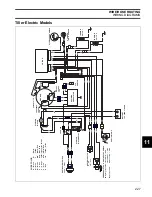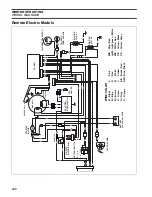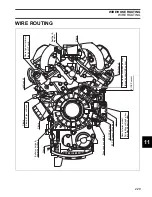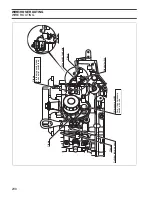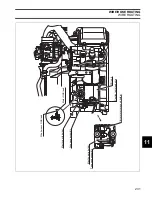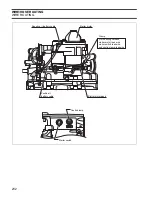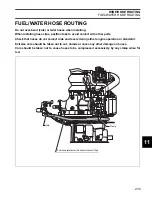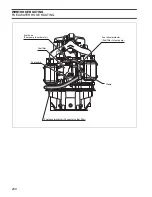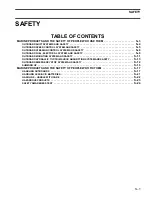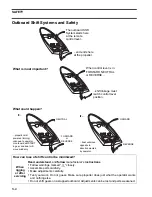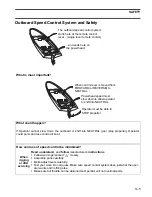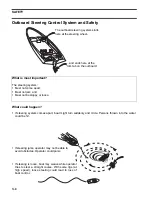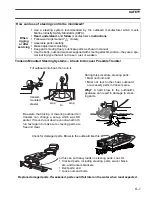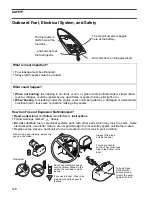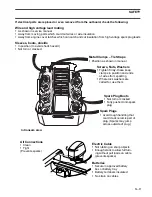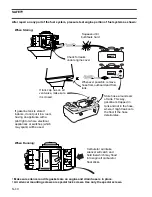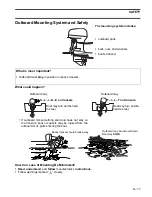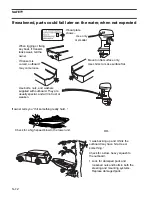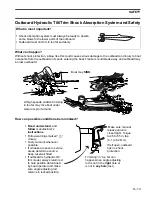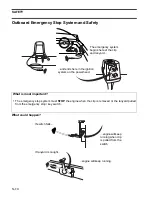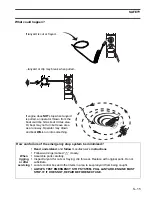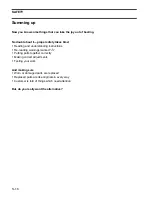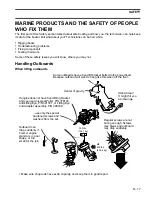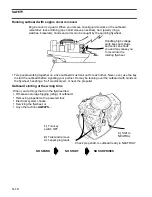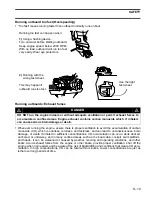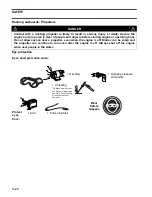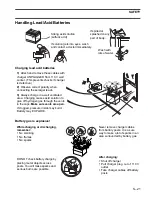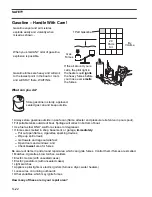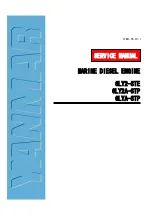
S–7
SAFETY
Transom Mounted Steering Systems – Check to Uncover Possible Trouble!
How can loss of steering control be minimized?
When
rigging
or after
servicing
•
Use a steering system recommended by the outboard manufacturer which meets
Marine Industry Safety Standards (ABYC).
•
Read
,
understand
, and
follow
manufacturer’s
instructions
•
Follow warnings marked “
” closely.
•
Assemble parts carefully.
•
Make adjustments carefully.
•
Keep parts moving freely. Lubricate parts as shown in manual.
•
Use the bolts, nuts and washers supplied with steering attachment kits—they are a spe-
cial locking type that will not loosen, rust, or weaken.
Tilt outboard into boat, then turn it.
transom
mounted
steerer
stop
to
stop
Be aware that raising or lowering outboard on
transom can change a set-up which was OK
earlier. If moved up or down even one-half inch,
run test again to make sure steering parts are
free and clear.
During this procedure, steering parts:
•
Must not bind; and
•
Must not touch other boat, outboard,
or accessory parts in transom area.
Why?
A hard blow to the outboard’s
gearcase can result in damage to steer-
ing parts.
Check for damaged parts. Blows to the outboard like this
or this can put heavy loads on steering parts. Look for:
•
Cracked parts, including steering parts, swivel brack-
ets, and transom brackets;
•
Bent parts; and
•
Loose nuts and bolts.
Replace damaged parts. If weakened, parts could fail later on the water when least expected.

